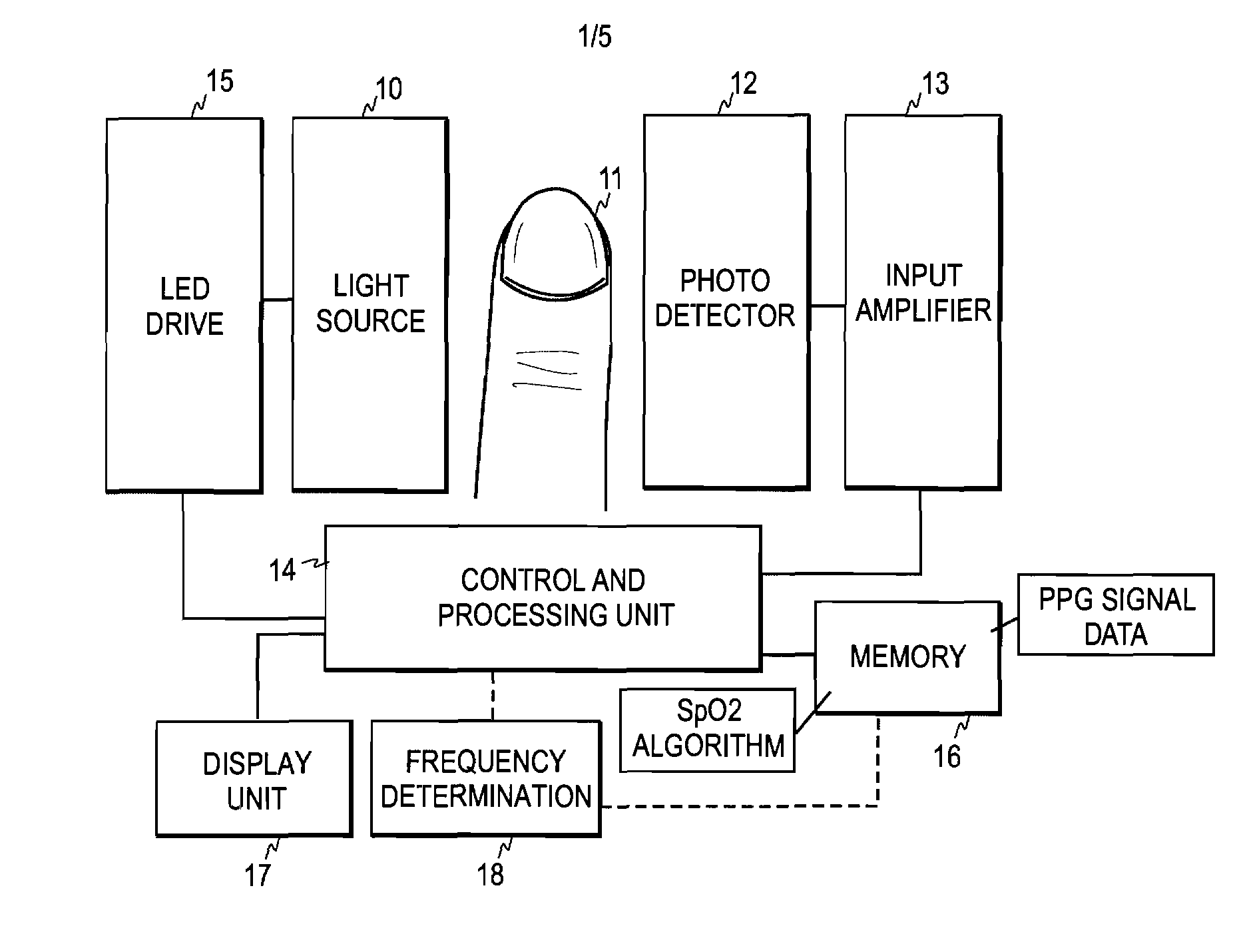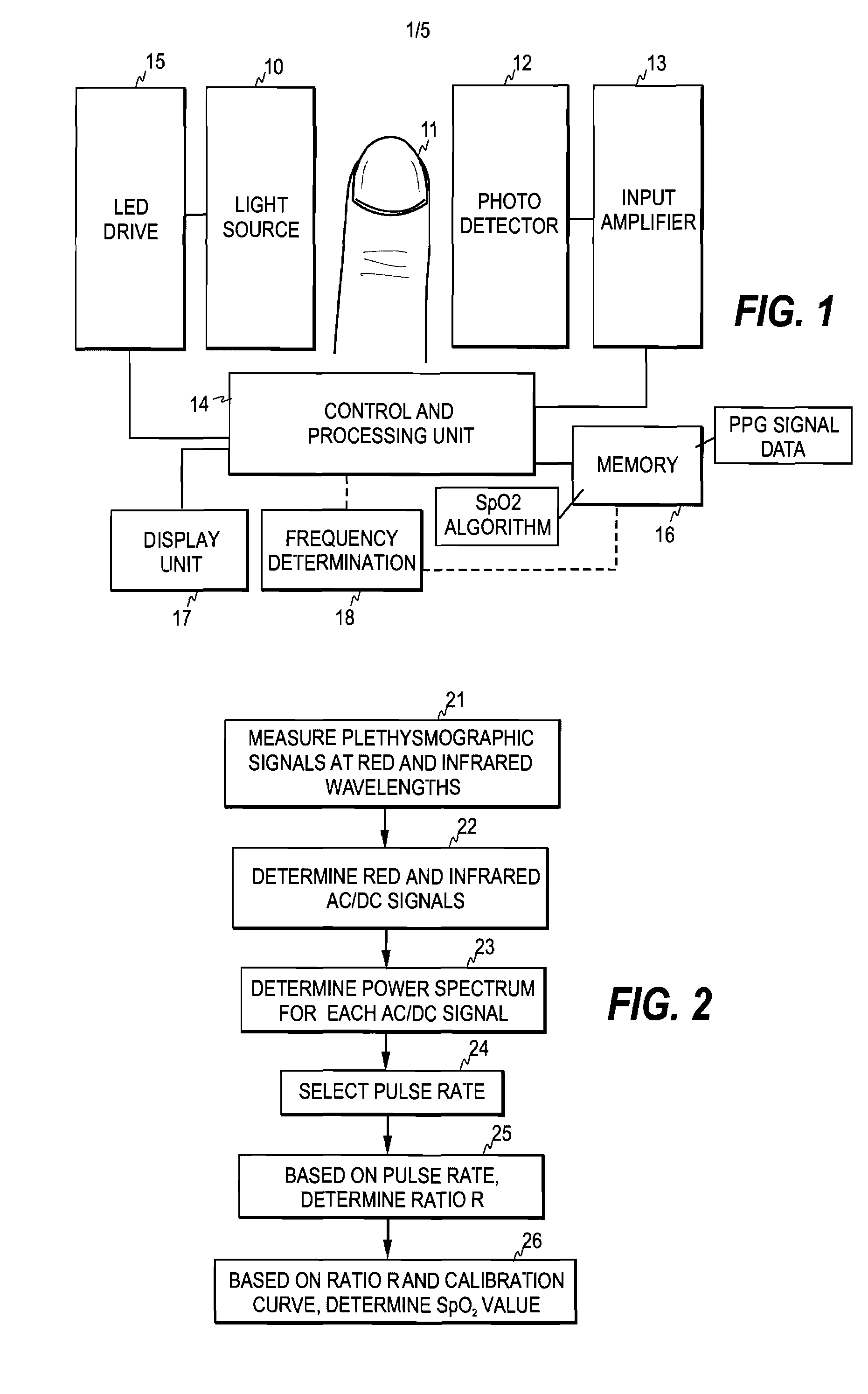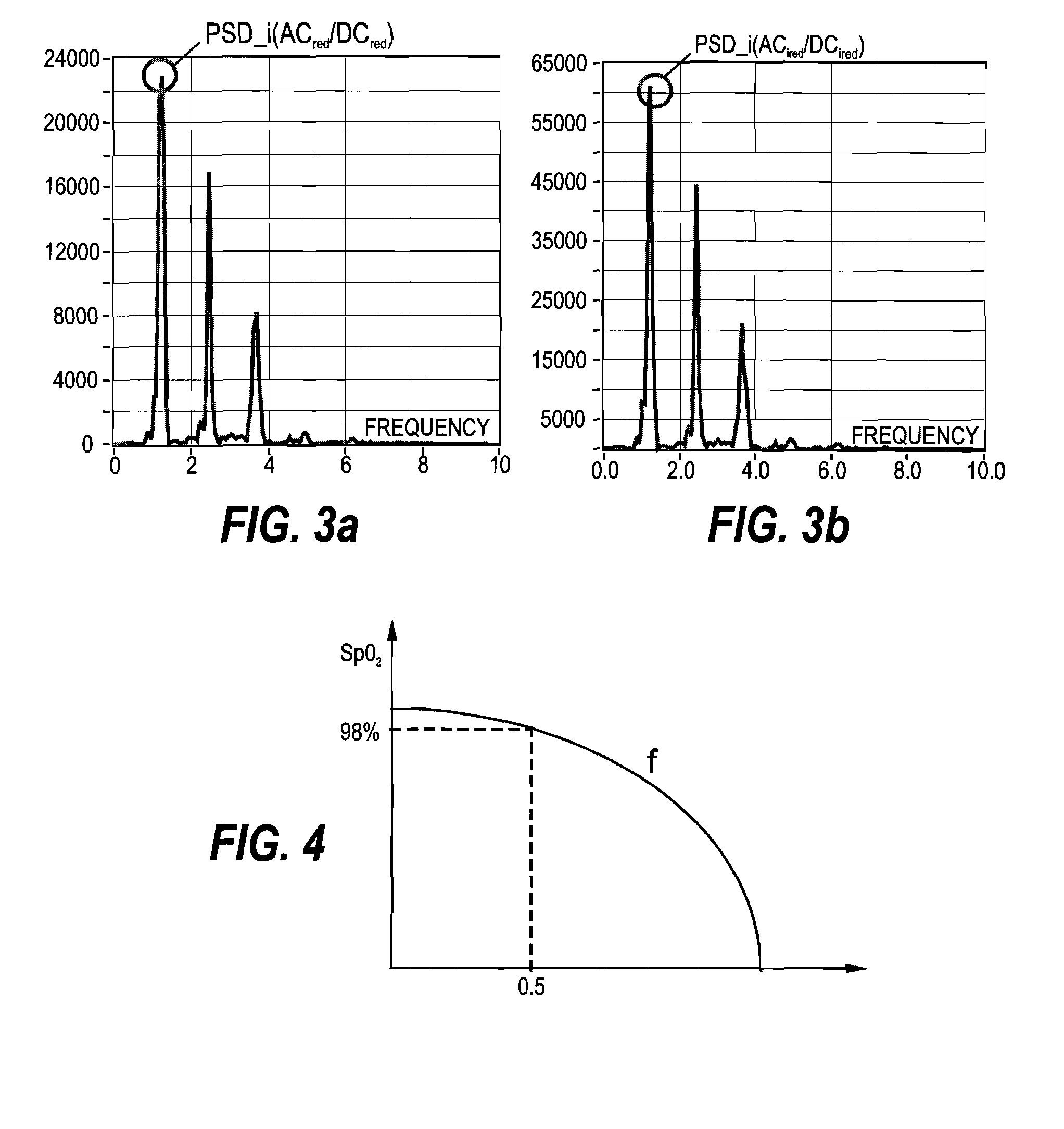Interference Suppression in Spectral Plethysmography
a spectral plethysmography and suppression technology, applied in the field of blood related physiological parameters assessment, can solve the problems of false spo/sub>2 /sub>reading, higher risk of erroneous pulse rate selection, and erroneous regarded, so as to reduce the probability of false pulse rate indication
- Summary
- Abstract
- Description
- Claims
- Application Information
AI Technical Summary
Benefits of technology
Problems solved by technology
Method used
Image
Examples
Embodiment Construction
[0035]FIG. 1 is a block diagram of one embodiment of a pulse oximeter according to the invention. Light transmitted from a light source 10 including the LEDs passes into patient tissue, such as a finger 11. The light propagated through or reflected from the tissue is received by a photo detector 12, which converts the optical signal received into an electrical signal and feeds it to an input amplifier 13. The amplified signal is then supplied to a control and processing unit 14, which converts the signals into digitized format. The digitized signal data is then utilized by an SpO2 algorithm for determining the blood oxygen saturation. The control and processing unit executes the algorithm and drives a display 17 to present the results on the screen of the display. The SpO2 algorithm may be stored in a memory 16 of the control and processing unit. The digitized PPG signal data may also be stored in the said memory before being supplied to the SPO2 algorithm.
[0036]The control and proc...
PUM
 Login to View More
Login to View More Abstract
Description
Claims
Application Information
 Login to View More
Login to View More - R&D
- Intellectual Property
- Life Sciences
- Materials
- Tech Scout
- Unparalleled Data Quality
- Higher Quality Content
- 60% Fewer Hallucinations
Browse by: Latest US Patents, China's latest patents, Technical Efficacy Thesaurus, Application Domain, Technology Topic, Popular Technical Reports.
© 2025 PatSnap. All rights reserved.Legal|Privacy policy|Modern Slavery Act Transparency Statement|Sitemap|About US| Contact US: help@patsnap.com



